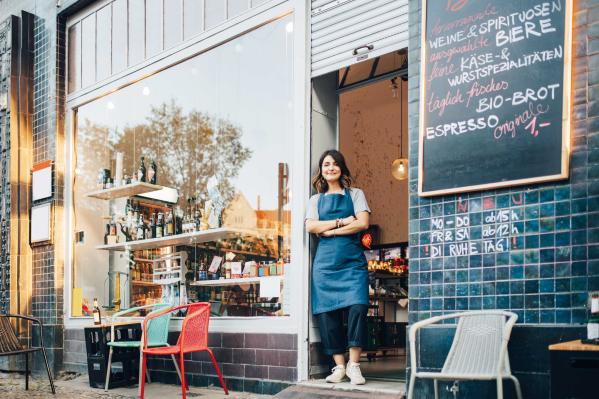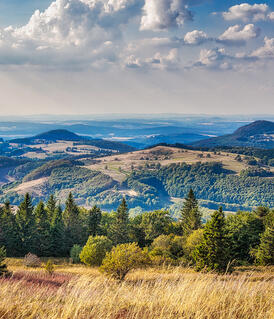Leisurely Enjoyment

German cuisine German cuisine There is no such thing as standard “German cuisine“, rather several regional specialties ranging from smoked sprats from Kiel to white sausage with sweet mustard from Munich. Regional cuisine is also very important for Germany’s top chefs. In 2023 Michelin Guide awarded 334 German restaurants one… Read more › , wine and beer are popular around the world and in high demand. Regional and health-focused products are particularly fashionable. Yet for all the many international influences, many amateur and professional chefs are returning to home grown ingredients. Organic foods are making up an ever larger share of the market.
German wine has been enjoying an international renaissance since the turn of the millennium. The “Riesling miracle” is embodied by a generation of young winemakers who prioritise high quality instead of large yields. Germany’s climatic conditions lend its wines Wines German wines are produced in13 wine-growing areas in which, over an area of more than 100,000 hectares, a wide variety of typical regional wines are made. Apart from Saxony and Saale-Unstrut in the East, the German wine-growing areas are primarily in the southwest and south of the country. Although… Read more › a fine texture without high alcohol content.
Which varieties of grape are grown in Germany?
Wine is grown in 13 regions across Germany with a wide range of distinctive regional characteristics and around 103,000 hectares under vine.
Germany’s wine-growing areas are the following:
- Ahr
- Baden
- Franken
- Hessische Bergstraße
- Pfalz
- Rheingau
- Rheinhessen
- Mittelrhein
- Mosel
- Nahe
- Saale-Unstrut
- Saxony Saxony Meissen may well be a small town but, thanks to its porcelain, is as well known as the state capital Dresden and Leipzig, the trade-fair city. The Free State is one of the most dynamic economic regions in East Germany, in particular in IT; precision watch-making and car-making are typical of this… Read more ›
- Württemberg
With some 15,000 or so producers, Germany is a medium-sized producer when compared to other wine-producing nations. Production in 2024 stood at 7.8 million hectolitres. Around 9% of Germany’s total wine-producing area is given over to organic wine production. Germany’s wine-growing areas are some of the most northerly in the world. Most are located in the south and south-west of the country, the exceptions being the regions of Saxony and Saale-Unstrut. The three largest wine-producing areas are Rheinhessen, Pfalz and Baden. While over 100 different grape varieties are cultivated in Germany, around 20 dominate the market, particularly the white Riesling and Müller-Thurgau grapes. White wine accounts for around 70% of German wine production. Red wine makes up 30%, with Pinot Noir and Dornfelder as the leading varietals. In 2021, the German Commission for UNESCO included Germany’s wine culture in the country’s “intangible cultural heritage”.
What is Germany’s Purity Law?
Germany is also a beer-loving land whose beer is appreciated as belonging to a centuries-old tradition of brewing by many small family-owned breweries and monastic breweries. Apart from a very few exceptions, all German beer is subject to the Purity Law of 1516, the world’s oldest regulation for foodstuffs. It states that beer may contain water, hops and barley and no other ingredients. Between 5,000 and 6,000 types of beer are produced in Germany, most of them in the pilsner style. Overall, however, beer consumption is falling. A popular trend in recent years has been craft beers. Produced by small independent breweries, these beers focus on unusual flavour combinations.
Which culinary trends are there in Germany?
The German restaurant industry is known for its dynamism and diversity and is considered among the best in Europe. Haute cuisine sits alongside crossover cooking and an increasing range of restaurants catering to vegetarian and vegan tastes. Meanwhile, traditional varieties of produce are enjoying a renaissance, such as parsnips, turnips and Jerusalem artichokes. These are the pillars of the current boom in all things healthy, seasonal, regional and reminiscent of home cooking. At the same time, a generation of young chefs are reinterpreting classic dishes and spicing them up with global influences.


